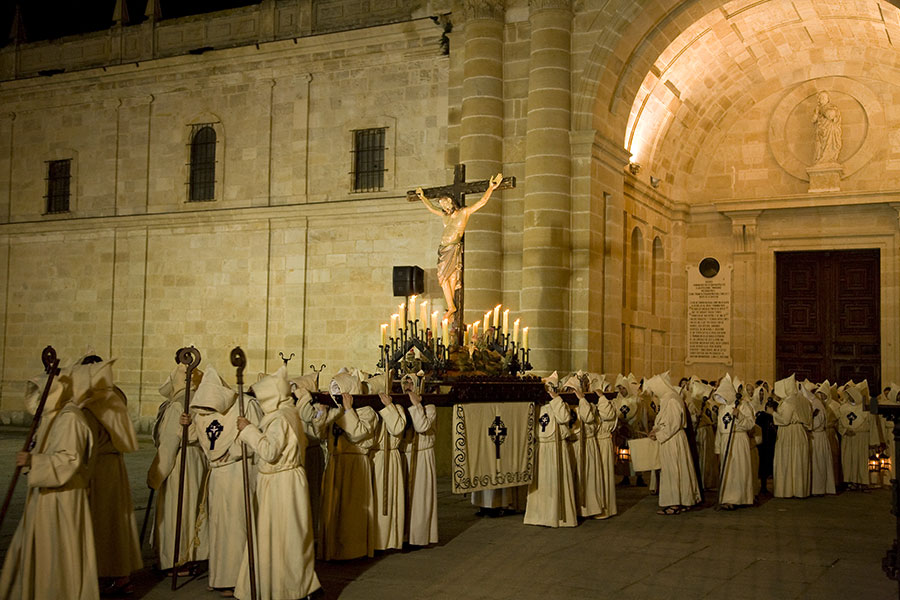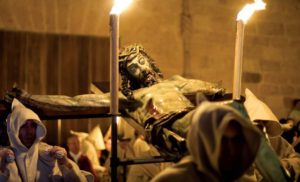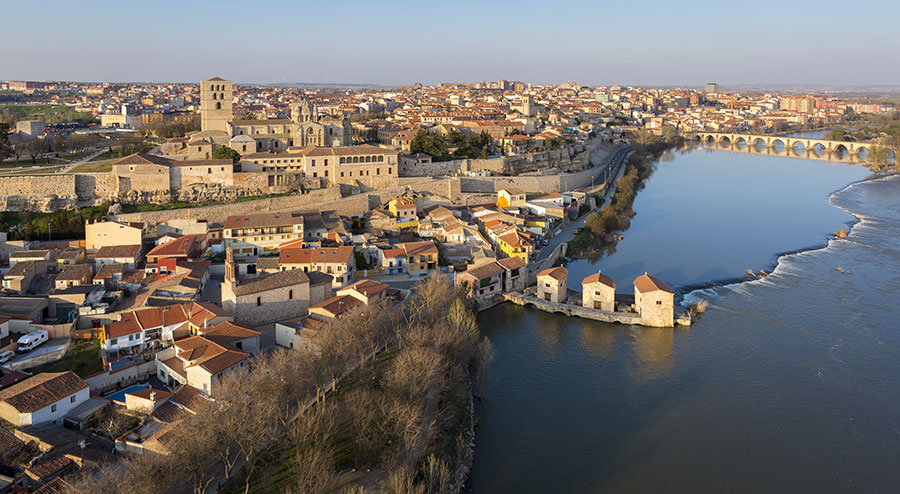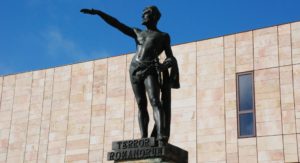Zamora

Declared International Tourist Interest in 1986, Zamora’s Holy Week is the most relevant religious, cultural and social event in the city. During the main days of the Passion, the city’s population quintuples and becomes a hive of emotion, austerity and fervour.
Zamora’s Holy Week is one of the most famous nationally as well as internationally, with its own character that expresses a great tradition that goes back to the Medieval era. It is the largest celebration in the capital and thus is experienced by the many citizens who flock to the streets. Noteworthy are the processions, austere and expressive, bringing religion to the beauty of their route through the streets of the old city. There are beautiful floats and sculptures, such as the Cristo de las Injurias, and other imagery artists like Benlliure and Ramón Álvarez.
Highlights include the Oath of Silence in the afternoon of Holy Wednesday, before the procession of the Santísimo Cristo de las Injurias, in which the mayor, before all the brothers, offers silence to the city, led by Christ; the austerity of the procession of the “Brown Cloaks” at midnight on Holy Wednesday; the chanting of the Miserere during the procession of the Yacente on Holy Thursday; the procession of the Brotherhood of Jesus of Nazareth Vulgo Congregación before dawn on Good Friday; the solemnity of the Holy Burial on the afternoon of Good Friday; and the joyful fireworks and flowers on Resurrection Sunday, among many others.
 There are seventeen brotherhoods that participate in processions through the streets of the capital between Passion Friday and Resurrection Sunday.
There are seventeen brotherhoods that participate in processions through the streets of the capital between Passion Friday and Resurrection Sunday.
Zamoran Holy Week also has its own gastronomy component. It is tradition to eat garlic soup for breakfast on the morning of Good Friday when the 5:00 am procession arrives at Tres Cruces, while during the procession, the brothers pass out sugar-coated almonds to the crowd.
On Resurrection Sunday, after the last procession, the “dos y pingada” (two eggs with fried ham and toast) is traditional.
Other typical dishes during the week are “bacalao a la tranca” (cod) and “ajo arriero” (garlic) and “aceitada” (biscuits).


 In the Plaza de Viriato, which houses the sculpture of Eduardo Barrón, dedicated to the Lusitanian shepherd, is the Palacio de la Encarnación, founded in the 17th century. Also located there is the 15th century Palace of the Count and Countess of Alba and Aliste, where the Parador is located. The Museum of Ethnology of Castilla and Leon is found in this same plaza.
In the Plaza de Viriato, which houses the sculpture of Eduardo Barrón, dedicated to the Lusitanian shepherd, is the Palacio de la Encarnación, founded in the 17th century. Also located there is the 15th century Palace of the Count and Countess of Alba and Aliste, where the Parador is located. The Museum of Ethnology of Castilla and Leon is found in this same plaza.